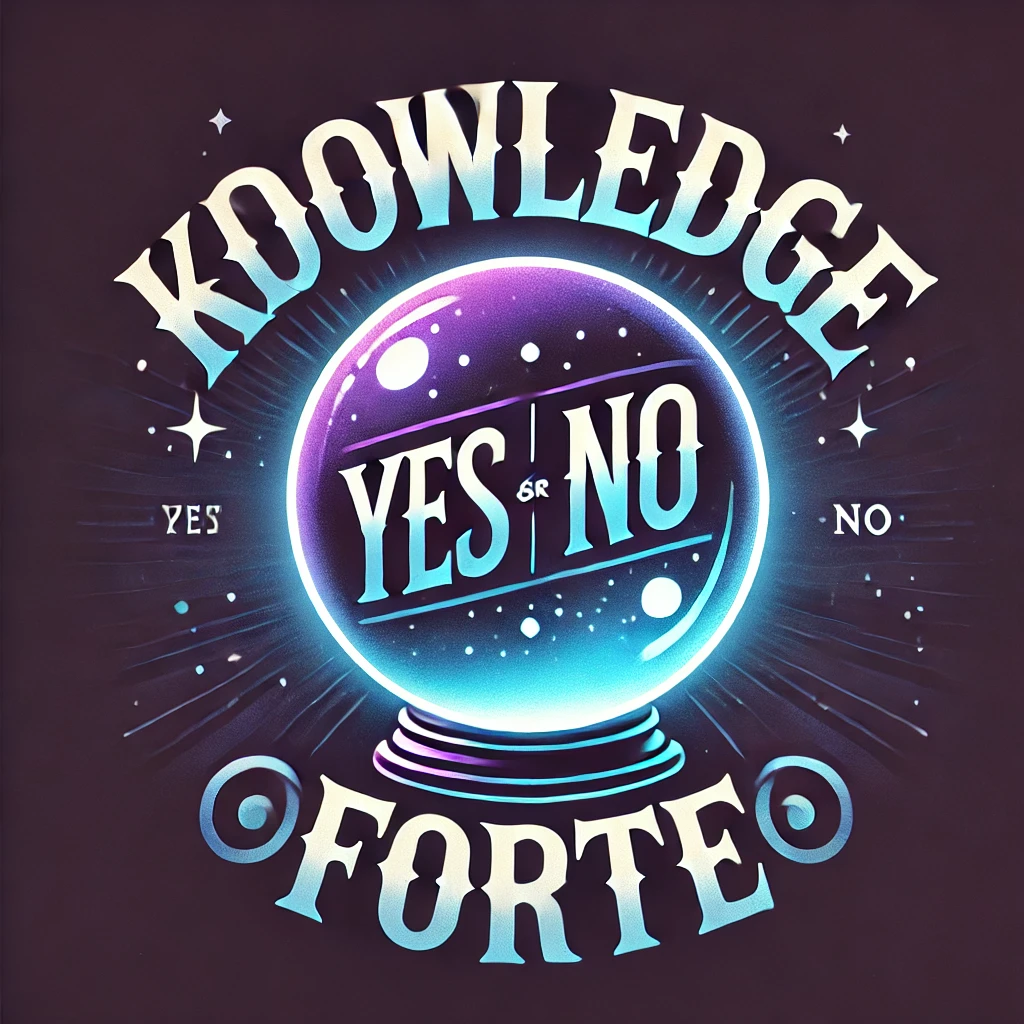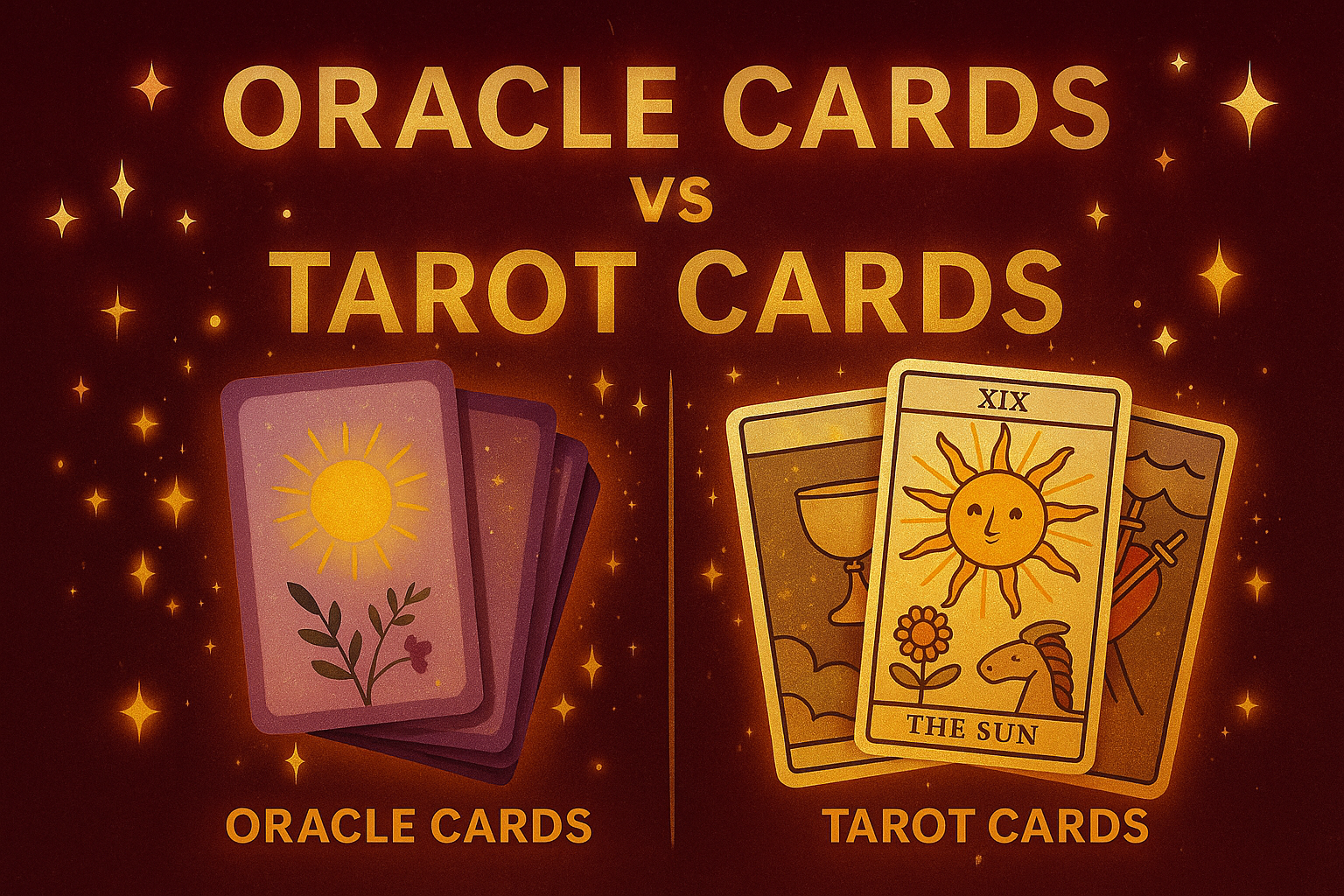Summary:
Tarot and oracle cards may look alike, but they serve very different purposes. Tarot follows a fixed 78-card structure with layers of symbolism, while oracle decks are flexible, beginner-friendly, and vary widely in theme and style. This guide breaks down the key differences between tarot and oracle, when to use each, and how some readers combine them for deeper insights. Along the way, you’ll also discover fun online tools.
Introduction:
If you’ve ever browsed a mystical shop, scrolled through spiritual TikTok, or even chatted with a friend who’s into card readings, you’ve probably heard about tarot cards and oracle cards. At first glance, they look similar—beautiful decks filled with symbols, images, and messages. But once you dive in, you’ll notice they’re very different tools for guidance and self-reflection.
The short answer? Tarot is structured, while oracle is flexible. One gives you a detailed roadmap, and the other offers gentle nudges and inspiration. And if you’re curious but don’t have a deck on hand, you can always try this Yes or No Oracle for an instant answer online.
What Are Tarot Cards?
Tarot cards are probably the most famous type of divination deck. A traditional tarot deck has 78 cards, divided into two main groups:
- Major Arcana (22 cards): Big-picture themes like The Fool, The Lovers, or The World. These cards often represent life lessons and turning points.
- Minor Arcana (56 cards): Everyday events and emotions, split into four suits — Cups, Wands, Swords, and Pentacles. Each suit connects to a different area of life, like emotions, energy, thoughts, or finances.
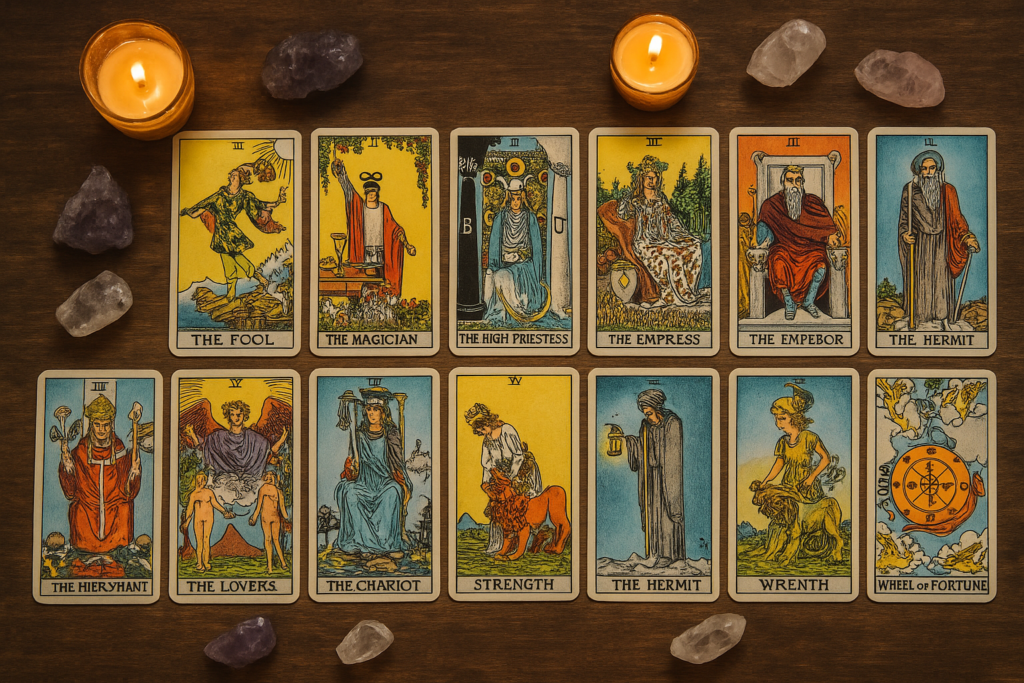
What makes tarot unique is its structured system. Every tarot deck follows this same format, and while the artwork may vary, the underlying meanings remain consistent. This makes tarot an excellent choice if you enjoy learning symbolism and working with patterns.
If you are more interested you can read our guide on how to read tarot cards.
People often use tarot when they want deeper insight into a situation — whether it’s love, career, or personal growth. It’s less about predicting the future and more about helping you see things from a new perspective.
👉 If you’d like to explore each card in detail, this tarot card meanings guide is a great starting point
What Are Oracle Cards?
If tarot is like a structured textbook, then oracle cards are more like a collection of inspirational short stories — each deck has its own voice, theme, and style. Unlike tarot, oracle cards don’t follow a set system. Some decks have 40 cards, some have 60, and the meanings are defined by the creator rather than tradition.
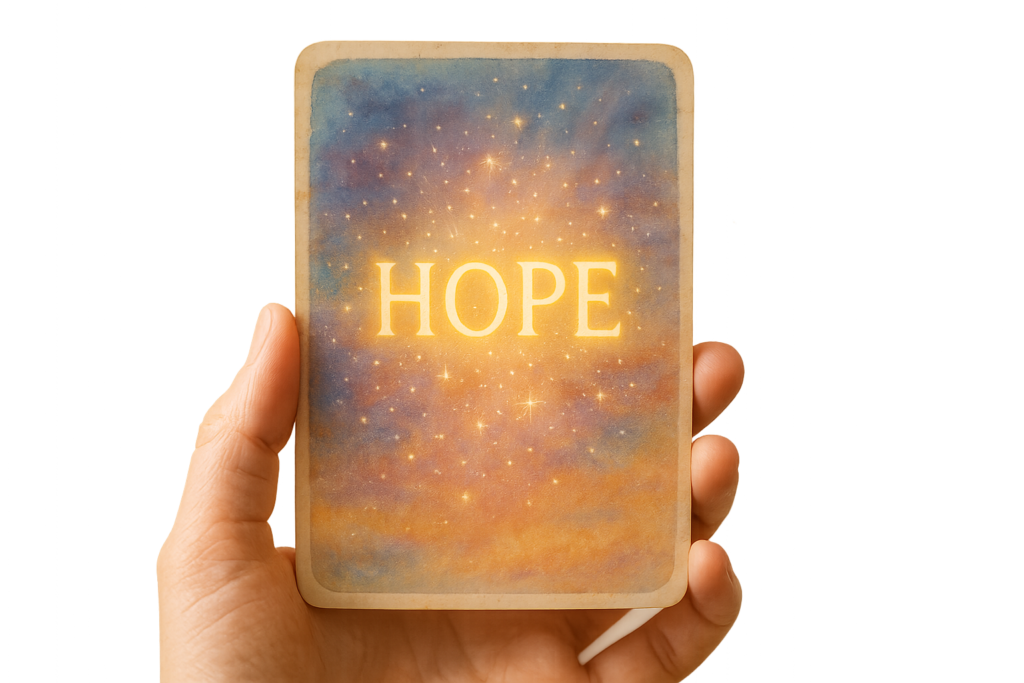
You’ll find oracle decks centered around angels, animals, astrology, affirmations, or even moon phases. Some are simple and uplifting, while others are more mystical and symbolic. This flexibility makes oracle cards especially beginner-friendly — you don’t have to memorize 78 card meanings. Instead, you simply connect with the imagery and messages in front of you.
People often turn to oracle cards for daily inspiration, encouragement, or quick clarity. They’re great for journaling prompts, meditation, or just pulling a card when you want a little nudge from the universe.
👉 If you’re curious to see how oracle decks work in practice, here’s a helpful beginner’s guide to oracle cards.
Oracle Cards vs Tarot Cards: Key Differences
Now that we’ve explored both, let’s put them side by side. While they both serve as tools for reflection and guidance, tarot and oracle cards approach this in very different ways.
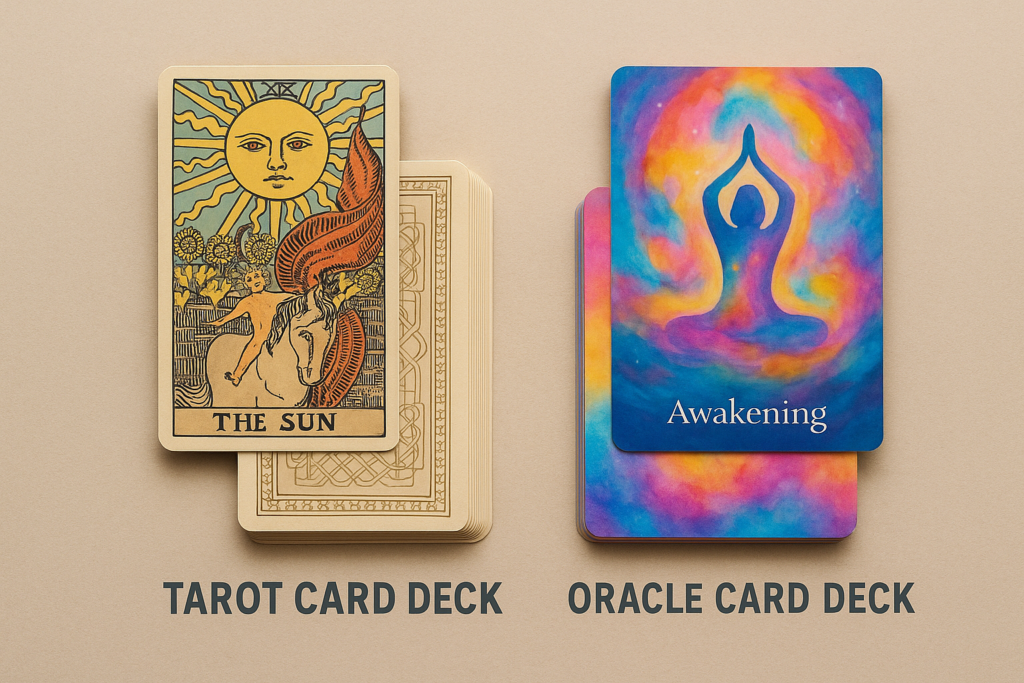
Here are some of the main differences:
| Feature | Tarot Cards | Oracle Cards |
| Structure | Fixed 78 cards (Major & Minor Arcana) | Varies (20–100+ cards depending on the deck) |
| System | Follows traditional symbolism and archetypes | Flexible, defined by creator |
| Learning Curve | Requires study and practice | Beginner-friendly, intuitive |
| Use | Deep self-discovery, spiritual growth, detailed readings | Quick guidance, affirmations, daily inspiration |
| Themes | Consistent across decks (but with artistic variations) | Wide range: angels, astrology, animals, chakras, etc. |
Some readers even combine both: they use tarot for in-depth readings and oracle cards for extra insight or clarity. For instance, after a tarot spread, you might pull an oracle card as a final “message of the day.”
👉 Curious about experimenting with light, playful tools? Try our interactive Dice Oracle — a fun, chance-based way to get a yes/no answer when you’re stuck between choices.
When to Use Tarot vs Oracle Cards
Both tarot and oracle cards are powerful in their own way—but the “right” choice often depends on your needs at the moment. Here’s how you might decide which to use:
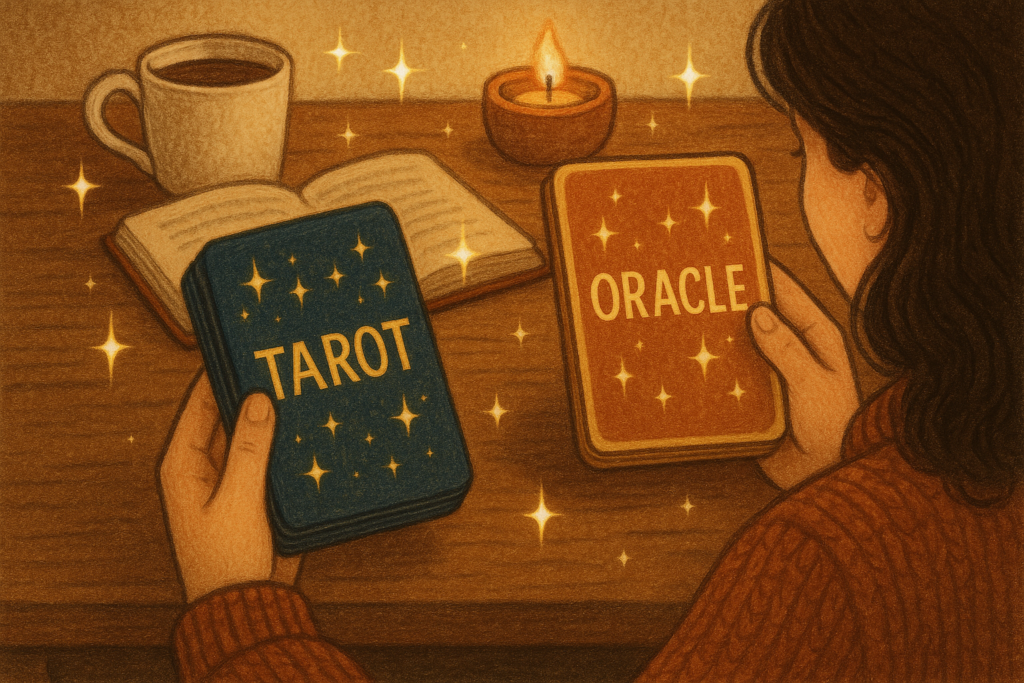
Use Tarot Cards When:
- You want a deep dive into your situation, exploring past, present, and future influences.
- You’re seeking spiritual growth and want to connect with archetypes and symbols.
- You’re comfortable with—or willing to learn—the more structured system of tarot.
Use Oracle Cards When:
- You need a quick answer or a gentle message for the day.
- You’re new to card readings and prefer a beginner-friendly tool.
- You want a deck that resonates with a specific theme, like angels, chakras, or astrology.
In fact, many readers love blending the two. Imagine pulling a tarot spread to understand the deeper story of your challenge, then drawing an oracle card for a final affirmation or spiritual nudge.
👉 If you’re fascinated by the stars, you’ll love our online Astrology Oracle — a mystical tool that connects guidance with zodiac-inspired insights.
Which Is Right for You?
At the end of the day, there’s no one-size-fits-all answer in the debate of oracle cards vs tarot cards. Some people love the depth and tradition of tarot, while others prefer the simplicity and flexibility of oracle cards. Many readers even keep both decks on hand—using tarot when they want a full story and oracle when they want a quick burst of clarity.
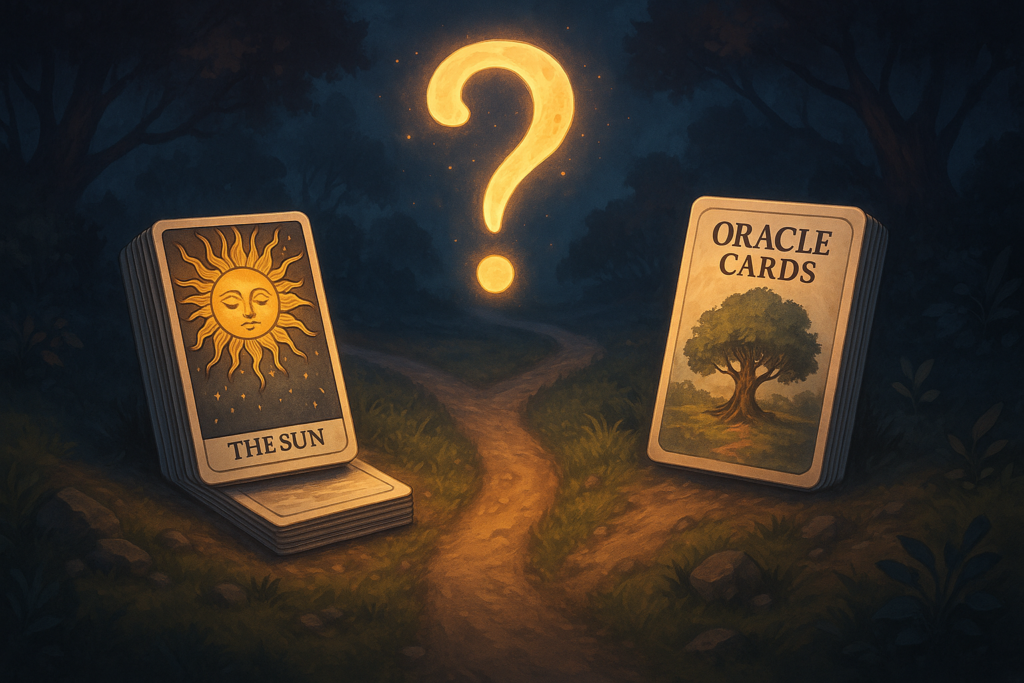
The best way to know what’s right for you? Experiment. Try pulling a tarot spread one day, then an oracle card the next. Notice which style resonates more with your personality, your questions, and your intuition.
And if you’re curious to start exploring online, we’ve got you covered:
- Ask a quick question with our magical Yes or No Oracle
- Roll the Dice Oracle for a playful spin on decision-making
- Or explore the cosmos with our online Astrology Oracle
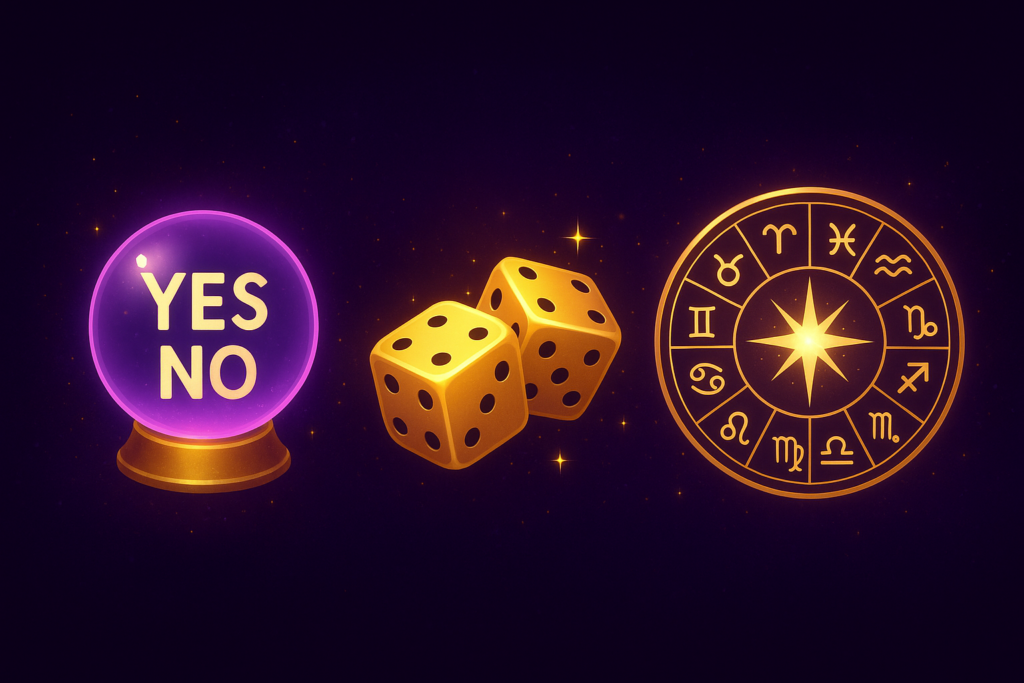
✨ Whether you’re team tarot, team oracle, or a little bit of both, remember—it’s all about tapping into your inner wisdom in a way that feels fun and meaningful.
